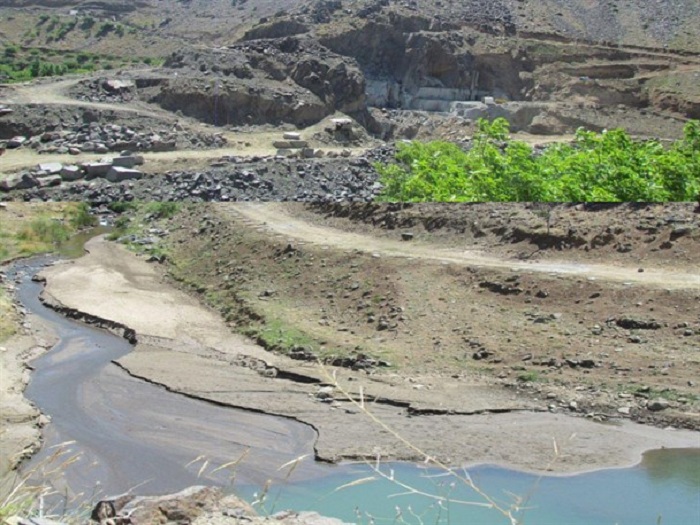Joint collaboration is the key to solving the water problem in the mines

Given the water supply situation in the country, and as we are in dire straits in the desert, we must recycle the water we use in the mines and factories.
According to the International Stone Exhibition of Iran, some mines, such as sand and coal mines, require more water than some, such as copper and iron ore, but are facing water shortages as over-exploited, open and underground mines. And because Iran has always been plagued by water shortages, water management in the mining sector is one of the important issues we have addressed in this issue. Water scarcity and the necessity of managing it in the mine is a subject that should be considered, as in all other sectors.
Water, the most important variable for mining projects
Amin Razmara, a mining expert said: The main areas of water use and losses associated with any mineral process include water use in camps, water use in the mine to reduce suspended dust and consumption in processing plants, mineral processing including crushing and grinding. It is followed by flotation, classification and dewatering.
He emphasized: The most important water use in the mine is the flotation sector, concentrate and tailing, evaporation and infiltration.
"One of the most important variables for mining projects is access to water," the mining expert said about the importance of managing water use in the mine. Since all stages of mining, especially mineral processing, require water, therefore availability and proper management of water is important for the sustainability of mining activities.
Razmara said about the challenges of the mining sector in water scarcity conditions: Increasing water demand and the lack of this resource in mineral areas not only causes conflict between the manufacturing sectors and sometimes puts the mine in front of the agricultural sector but also puts more pressure on activists in terms of access for human consumption. Mineral and throughout the country.
The mining expert said: "In the mining sector, there is now a growing emphasis on rational and efficient use of water in related operations, the adoption of measures to optimize consumption through best management practices or the introduction of up-to-date technologies that can reduce relative demand." Examples include water rotation in operation, desalination and direct use of tap water, improved tailor-made operation through the development of dewatering techniques that increase solids concentration and lower water consumption for large-scale industrial production. . Efforts to reduce wastewater disposal to the environment can also be mentioned, which leads to increased incentives to invest in refineries.
As a solution to the problem of water in the mining sector, he said: "Due to the growth prospects in the mining sector as well as the increasing demand of different sectors for water consumption, we must look for practical solutions and long-term measures regarding access to water. Despite individual actions in the mines, the formulation of joint actions and mutual stakeholder agreement, both public and private, between the manufacturing sectors and in particular the mines should be considered.
Razmara concluded: "Although productivity in the field of water management by the mining sector has made significant progress, facing structural weaknesses necessitates continued efforts to increase water productivity." Therefore, given the limited resources available, efforts to continue to increase the level of productivity of existing technologies, the use of new facilities, and the commitment of each company to implement management models for the efficient use of resources such as water should be a constant concern and a synergistic factor for mining companies.
The importance of water recycling in mines
Asked how much water mines the country consumes, mining expert Mohammad Reza Spahbod said: "Mines are not consumed in the water exploration sector, but the amount of water consumed varies when we reach the extraction stage."
"Some minerals or minerals consume less water, and some consume more water," the miner said. For example, when we bring coal mines to the extraction stage, we should use the coal mill. According to my thirty years' experience in mining, these mines sometimes require four hundred liters per second as a result of the amount of water they consume.
"Although copper, lead, zinc and iron do not consume much water than coal mines, they also have a high percentage of water consumption that we can see in the processing, condensing and flotation stages," said Spahbod.
"As a water expert who has worked in the mines for many years, I believe we have to recycle the water used for the mines in the country," he said. We have no right to consume water and waste it in the tailings dam.
He stressed: "With the water supply situation in the country, and given that we are in dire straits in the desert, we must recycle the water we use in the mines and factories."










